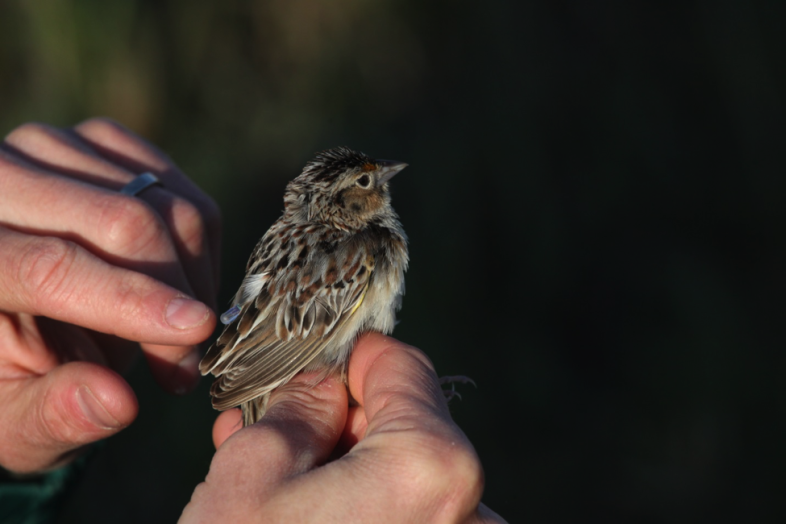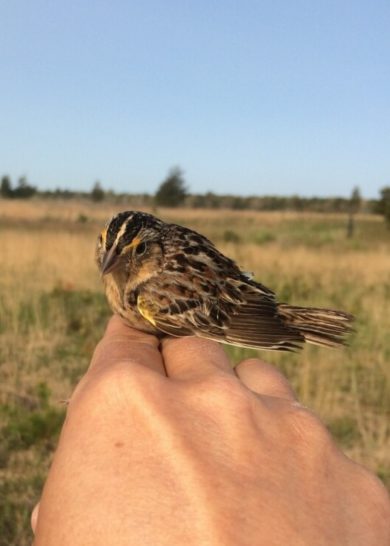
Male Grasshopper Sparrow at Camp Grafton, North Dakota, wearing a light-level geolocator. Photo by Alexandra Lehner.
Those of us who are old enough may remember Bob Barker’s “Come on down!” that preceded the Price Is Right song. But a seemingly dainty and definitely inconspicuous grassland bird was singing that tune long before Bob beckoned screaming audience members to become contestants on the popular game show.
For VCE biologist Jason Hill, unveiling the secrets this bird holds is more exciting than a new car or a vacation in Hawaii. This summer Jason and his crews are logging many miles on foot at six Department of Defense installations across the country to recapture Grasshopper Sparrows that they captured last year.
The Grasshopper Sparrow’s three high-pitched “ticks” followed by a long trill gives away this 17 g bird that may elude the eyes under the cover of grass. Like most birds, Grasshopper Sparrows are show-offs during breeding season, singing frequently on perches, and relatively easy to find despite their diminutive size. During migration and winter, however, they are notoriously skulky and secretive, and difficult to detect.
To learn about migration patterns and wintering areas of different Grasshopper Sparrow breeding populations, we deployed tiny, light-level recording devices called geolocators on 180 of them, from Massachusetts to Kansas. Birds recaptured this year will carry with them loads of new information about their daily location, all year long.

Grasshopper Sparrow with a geolocator – can you see the tip of it on the bird’s lower back?
In the Northeast, Grasshopper Sparrows remain in only a few places; mostly airfields with the short, relatively sparse grassy vegetation they prefer. Further west in the heart of their breeding range, there is much more habitat available to the birds. We expected that eastern birds would be more likely to return to the same places this year because they simply have few other places to go. Further west, we expected they would be more likely to disperse and shift, and less likely to show up in the same spot from one year to the next.
So far, that is exactly what we are finding (see a Grasshopper Sparrow released after its geolocator has been removed). After deploying 30 geolocators at each site last year, 10 have been recovered at one of the eastern sites (the prize to the field technicians who spotted the birds was ice cream, not living room furniture), but only 4 have been recovered on two Midwest sites. We still have three installations to search, however, so expect this number to rise. Whether there are data from 10 birds or 2 birds at a given site, we are in for a treat when we download the data from birds at all 6 sites, and discover their migration paths, their population connectivity, the timing of their movements, and their wintering areas.
Getting the first look ever at what Grasshopper Sparrows do all year – it beats being the next Price is Right contestant.
